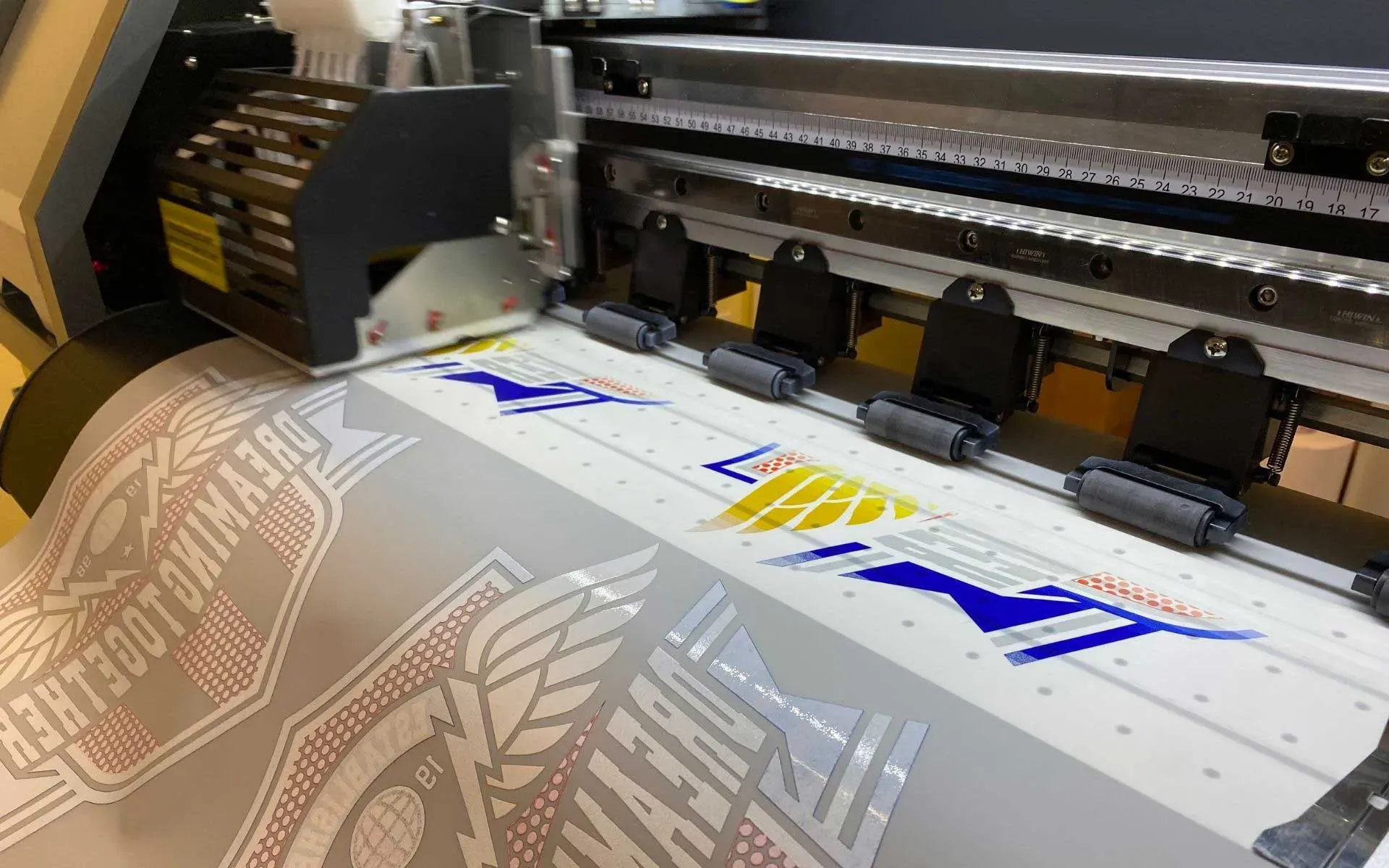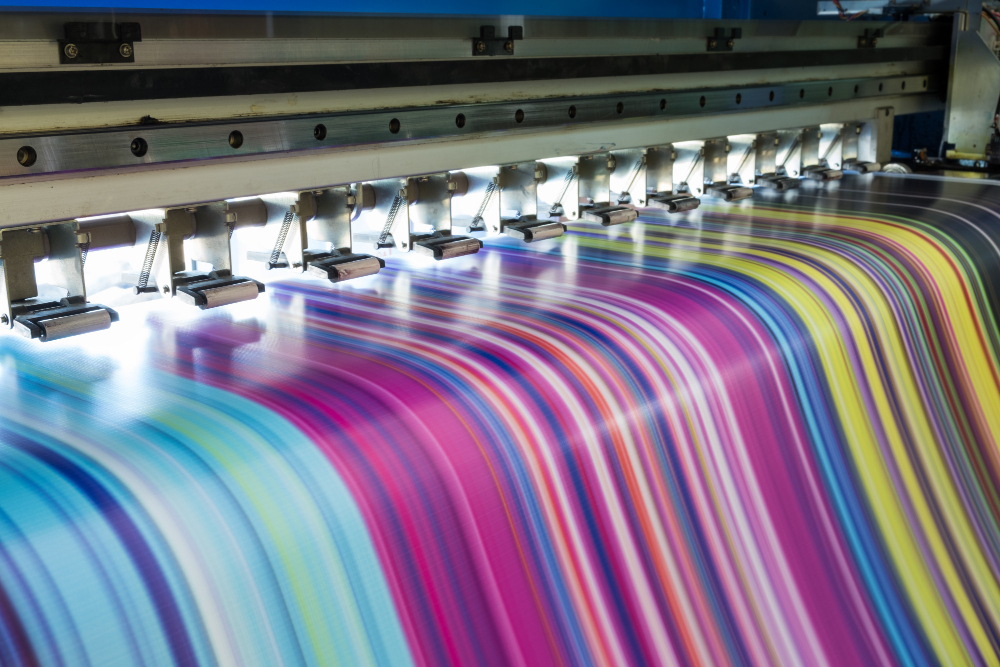DTF Transfers: The Best Printing Method for Your Needs
DTF Transfers, short for Direct-to-Film transfers, are making a significant impact in the world of textile printing thanks to their unique qualities and eco-friendly approach. Unlike traditional methods such as sublimation and screen printing, DTF printing allows for vibrant designs on a wider variety of fabrics, including cotton and dark materials. This innovation is particularly appealing for those seeking sustainable printing solutions, as it minimizes waste and chemical usage. In this post, we will delve into the advantages and drawbacks of DTF Transfers, providing you with a comprehensive comparison against other printing methods. Join us as we explore how DTF can elevate your printing projects while being mindful of the environment.
Direct-to-Film (DTF) printing, also referred to as transfer printing, is revolutionizing the way we think about custom apparel and textile design. This contemporary printing technique combines cutting-edge technology with an environmentally responsible approach, setting it apart from older methods like screen and sublimation printing. As businesses seek to enhance design quality while reducing their ecological footprint, DTF has emerged as a compelling alternative. In this article, we will examine the pivotal differences in printing methods and their implications, helping both novices and experts navigate the exciting possibilities in modern printing.
Exploring the Mechanics of DTF Printing
Direct-to-Film (DTF) printing operates on a unique premise that compresses traditional methods into a more efficient and adaptable process. Initially, designs are printed onto a special film using a specialized inkjet printer that employs vibrant, high-quality inks. This film is then heat-transferred to various fabrics, providing a robust and durable imprint that truly showcases color vibrancy. Moreover, unlike other methods that are limited to specific types of textiles, DTF’s adaptability allows it to be effective on cotton, blends, and even dark materials, making it an attractive alternative for those looking to expand their printing capabilities.
The DTF printing process stands apart not just for its versatility, but also for the quality it produces. It allows for intricate designs to be vividly displayed, capturing details that other printing methods might struggle with. This has made DTF a favorite among designers and small businesses wanting to stand out with their apparel, enabling them to create unique and personalized items that resonate with consumers. Furthermore, the ability to employ this technology across a wide fabric spectrum ensures a broader market appeal, providing businesses with endless possibilities.
The Environmental Benefits of DTF Transfers
Sustainability is a pressing concern for many businesses today, and DTF printing is uniquely positioned to answer this challenge. In comparison to traditional screen printing, which often generates excessive waste through ink spills and the need for building large screens, DTF reduces waste significantly. DTF’s process only uses the necessary amount of ink required for a print job, leading to less material waste and requiring fewer chemicals, which translates to a lower environmental footprint. This eco-friendly aspect makes DTF particularly appealing for companies aiming to comply with sustainable practices.
Moreover, many consumers now prioritize purchasing from brands that hold sustainability in high regard. With eco-friendly trends on the rise, DTF technology allows businesses to market themselves as environmentally conscious while still delivering high-quality products. This dual benefit not only supports responsible consumerism but also enhances a brand’s image, ultimately contributing to stronger customer loyalty and increased sales. By adopting DTF printing, businesses are not just improving their printing techniques but are also making a significant statement about their commitment to the planet.
DTF Transfers vs. Sublimation Printing: A Comprehensive Comparison
When comparing DTF transfers with sublimation printing, it’s crucial to understand the fundamental differences in their processes and outcomes. Sublimation printing works best on polyester fabrics by turning solid dye into gas without passing through a liquid stage, effectively embedding ink into the fabric. This method produces incredibly vibrant colors but is limited to specific materials, primarily those which are polymer-based. DTF printing, on the other hand, shines with its ability to apply designs directly onto a wider array of fabrics, including cotton and dark materials, filling a significant gap that sublimation leaves.
Another aspect to consider is the tactile feel of each method’s finish. Sublimation integrates inks into the fabric, resulting in a seamless feel that many consumers prefer. In contrast, DTF transfers may have a thicker feel on the surface due to their application process. This difference can greatly influence consumer choice, especially among those who prioritize softness in their textile products. Understanding these nuances enables businesses to choose the right method based on the target audience and fabric type, ensuring satisfaction in the final product.
Recent Innovations in DTF Printing Technology
Advancements in DTF printing technology are constantly reshaping the landscape, making it more efficient and accessible for users. Innovative solutions, such as improved printers and heat transfer methods, have enhanced the quality and speed of DTF services. Brands leading the market have introduced automated and user-friendly platforms that simplify the printing process, ensuring quick turnaround times without sacrificing print quality. These innovations are particularly beneficial for small businesses and home crafters looking to scale their projects without the need for significant investment.
In addition to efficiency improvements, the customization capabilities provided by DTF technology have grown exponentially. As demand for unique, personalized products rises, innovations within DTF printing allow creators to explore new design possibilities tailored to individual preferences. From customizable apparel to unique promotional items, DTF printing has opened doors for creative expressions that align perfectly with consumer trends. Staying informed about these innovations is vital for businesses aiming to thrive in a competitive market.
Market Trends: The Growth of DTF Printing Services
The DTF printing sector is experiencing a surge in popularity, reflecting broader market trends favoring fast, high-quality, and versatile printing solutions. As consumers demand personalization and unique apparel designs, businesses are increasingly adopting DTF technology to fulfill these needs. This method allows for rapid printing capabilities without the elaborate setup often required by traditional screen printing or the material restrictions of sublimation. As a result, more entrepreneurs are entering the DTF market, tapping into consumer desires for bespoke textile products.
Market growth in DTF printing not only benefits printers but also stimulates the entire apparel and merchandising sector. The affordability of DTF printers and transfer films means that even small businesses can compete alongside larger companies, leveling the playing field. Organizations focusing on niche markets or custom designs can now capitalize on these developments, creating tailored products that resonate with specific demographics. This continual evolution in the DTF domain presents countless opportunities for innovation, brand differentiation, and enhanced profitability.
Choosing the Right Printing Method: Tips and Considerations
Selecting the most suitable printing method for your specific needs can seem daunting, especially with various options available, such as DTF transfers, sublimation, and screen printing. Assessing the fabric type and intended use of your products is crucial when making this choice. DTF printing excels in versatility, working flawlessly on a wide array of fabrics, including cotton blends and dark materials, which might be a key factor for many designers. Moreover, if you seek eco-friendly solutions, DTF’s lower waste and chemical use could align with your business values.
Another essential consideration is the tactile feel desired in your finished products. If customers prioritize a soft, seamless feel, sublimation might be worth exploring despite its limitations. Alternatively, if vibrant images on diverse materials are a priority, DTF transfer printing becomes an evident choice. Lastly, consider the scale of your production; DTF printing allows for quick turnarounds, making it suitable for businesses needing rapid response times. Ultimately, understanding your project requirements will guide you in choosing the right printing method that aligns with your vision.
Frequently Asked Questions
What is the process behind DTF printing and how does it compare with sublimation printing?
DTF printing, or Direct-to-Film printing, involves printing designs onto a special film which is then heat-pressed onto fabrics. Unlike sublimation printing, which requires polyester materials, DTF can be used on a wider variety of fabrics including cotton, making it more versatile. This versatility is one of the main advantages of DTF over sublimation.
Are DTF transfers eco-friendly compared to other printing methods like screen printing?
Yes, DTF transfers are considered eco-friendly as they generate less waste and require fewer chemicals compared to traditional screen printing. DTF printing minimizes excess ink and substrate usage, making it a sustainable choice for environmentally-conscious businesses.
What advantages does DTF printing offer over screen printing for apparel designs?
DTF printing offers several advantages over screen printing, including greater flexibility in fabric choice and avoiding the complicated setup often required in screen printing. DTF can print high-resolution graphics on various materials with vibrant colors, which may not be achievable with screen printing.
How does the finish of DTF transfers feel compared to sublimation and screen printing?
While DTF transfers provide high-quality and vibrant images, they can feel heavier and more pronounced on the garment compared to sublimation, where the ink penetrates the fabric resulting in a softer finish. Users who prioritize a ‘soft-hand’ feel may prefer sublimation.
What types of fabrics can DTF printing effectively work on?
DTF printing is highly versatile and can work on a variety of fabrics. It is particularly effective on cotton, polyester blends, and even darker materials, giving it a distinct edge over other printing methods like sublimation, which is more limited to polyester.
Is DTF technology suitable for small businesses looking to customize apparel?
Absolutely! DTF technology is increasingly popular among small businesses and crafters due to its quick turnaround times and ability to produce high-quality prints without extensive setup. This makes it an excellent choice for those looking to create custom merchandise efficiently.
| Key Point | Details |
|---|---|
| DTF Printing Process | Involves printing designs on special film with an inkjet printer, applied to fabric using heat and pressure. |
| Sustainability | Reduced waste and chemicals compared to screen printing, supporting eco-friendly practices. |
| Versatility | Can print on a wider range of materials including cotton, unlike sublimation which is limited to polyester. |
| Qualitative Aspects | Produces vibrant, high-resolution images and intricate designs but the transfers may feel noticeable on fabric. |
| Market Growth | Rapidly growing market attracting both established and new businesses, offering opportunities for crafters and creators. |
| Advantages | Includes versatility, eco-friendliness, and high-quality prints (vibrant designs). |
| Limitations | Transfer feel may be noticeable, and application requires precise temperature and pressure. |
Summary
DTF Transfers are an excellent choice for those searching for a sustainable and versatile printing solution. With its unique ability to produce high-quality prints on various materials and its lower environmental footprint compared to traditional methods, DTF printing offers a multitude of benefits. However, users should also consider the characteristics of the transfer feel and the precision required during application. By carefully assessing these factors against your specific needs, you can determine if DTF Transfers is the ideal method for your printing projects.






